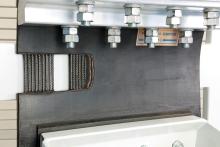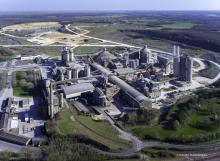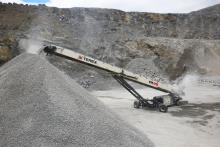Thanks to a new technology, the existing bucket elevator could be easily altered and his service life considerably be increased.
To produce cement for various applications in an economic way, Lafarge modernised the production facilities at its plant in the town of Wössingen, in the Baden region, Germany.
The modernisation included the existing belt bucket elevator to the raw mill. The intralogistics specialist Beumer offered its innovative heavy-duty bucket elevators, permitting higher conveying capacity and longer service life. Thanks to this new technology, the existing bucket elevator could be easily altered.
The preheater tower of Lafarge Group's cement plant looms just a few hundred metres before the sign Wössingen, near Karlsruhe. In the 1970s the plant has been taken over by the international producer of cement.
"We have almost 78,000 employees in 78 countries", says Stephan Schenk, head of servicing and development at Lafarge Zement Wössingen.
In Germany, Lafarge is among the six leading producers.
"Thanks to the state-of-the-art technology and a high sense of responsibility, we produce approximately 800,000tonnes of cement per year for various applications and requirements at our Wössingen site", Schenk explains.
Lafarge places particular value on production methods that are both energy-efficient and environmentally sound. For this reason, the systems have been modernised for more than €60 million in 2008 and 2009. Now, the cement plant has a five-stage heat exchanger and a new clinker cooler.
"We changed from the Lepol process to the energy-saving dry process with heat exchanger and precalciner with no interruption to the operation. To make the production more cost-effective and environmentally sound, we changed from the two-kiln operation to a single rotary kiln", Schenk explains. "
The kiln line now has a considerably higher capacity.








